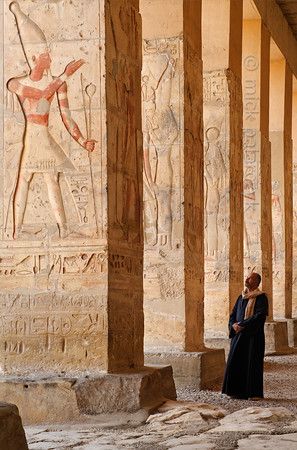Ancient Thebes and the Collosus of Memnon
- Escapedatlast.com

- Sep 13, 2020
- 2 min read
Thebes, one of the famed cities of antiquity, the capital of the ancient Egyptian empire at its heyday. Ancient Thebes lay on either side of the Nile River, where now the modern city of Luxor can be found. Were not here to to investigate the souq or have lunch at the Winter Palace. Lets explore the old city and its west bank marvels.

The main part of the city where the people lived and worked was situated along the Nile’s east bank. Along the west bank was the necropolis, or “city of the dead,” an area containing the royal tombs and mortuary temples, as well as the houses of those priests, soldiers, craftsmen, and labourers who were devoted to the service of the Egyptian rulers.

So lets begin at the Karnak Temple Complex. The key difference between Karnak and most of the other temples and ancient sites in Egypt, is the length of time over which it was developed and used. Construction of temples started in the Middle Kingdom and continued into Ptolemaic times. Approximately thirty pharaohs contributed to the buildings, enabling it to reach a size, complexity, and diversity not seen elsewhere in Egypt.
Strolling around this complex of temples you find one of the most famous aspects of Karnak the Hypostyle Hall in the Precinct of Amun-Re, a coliinaded hall area with 134 massive columns arranged in 16 rows. A 122 of these columns are over 10 meters tall, and the other 12 are 21 meters tall with a diameter of over three meters, a really impresive sight and if you look up towards the sky, you can feel quite dizzy. This was another tick off the bucket list.

Time to move on, and jump into our 4x4 for a short (in Egyptian terms at least)to see the Collosus of Memnon.

Here we are in a nondiscript field in Egypt and look what you find.
The Colossi of Memnon was built by Amenhotep III. They stand on the West Bank, directly across the Nile from Thebes. Each statue stands about 20 meters high and resemble Amenhotep III himself. The name of the statues came to be after an earthquake damaged the right (northern) statue. For some reason, after it was damaged, the statue would emit strange sounds in the morning, possibly related to the heat of the sun. In a search for an explanation for the sound, ancient Greeks looked to the story of Memnon by Homer. Memnon was said to be killed by Achilles and after his death he reappeared in a statue in Thebes and cried every morning with the rising sun.
Although they look as if they are standing randomly in the middle of no where, they actually used to flank the entrance of the first pylon of Amenhotep III’s mortuary temple.
There is currently an excavation on this site that will lead to the restoring of Amenhoteps mortuary temple, completion sometime 2023.



























Comments